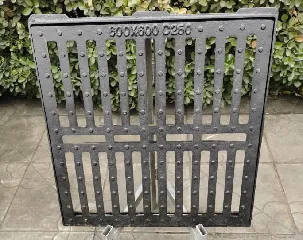Guidelines for Properly Installing a Bollard in Urban Spaces
Installing a Bollard A Comprehensive Guide
Bollards are sturdy, vertical posts that serve various purposes, including traffic control, safety, and aesthetic appeal in urban design. Whether you need to prevent vehicle access to pedestrian zones, protect buildings from errant cars, or simply enhance the beauty of a space, installing a bollard can be an effective solution. This article will walk you through the key steps and considerations for installing a bollard.
Understanding Bollards
Before diving into the installation process, it's important to understand the types of bollards available. Bollards can be made from materials like steel, concrete, plastic, or wood, and can be either fixed or removable. Fixed bollards are permanently installed in place, providing steadfast protection. Removable bollards, on the other hand, can be taken out when necessary, allowing for temporary access. Choose the type of bollard that best fits your project’s specific needs.
Planning the Installation
1. Determine the Location Consider where you want to install the bollard. It should be placed in areas that require protection, such as near entrances, walkways, or high-traffic zones. Make sure the location complies with local regulations and traffic safety standards.
2. Permits and Regulations Depending on your region, you may need to obtain permits or comply with zoning laws. Check with local authorities or a building inspector to ensure that your installation meets all required regulations.
3. Gather Materials and Tools You'll need to have the appropriate materials and tools on hand before beginning installation. Common materials include the bollard itself, concrete (for fixed bollards), and gravel for drainage. Tools may include a post hole digger, shovel, level, measuring tape, gloves, and safety goggles.
Installation Steps
1. Mark the Location Use spray paint or stakes to mark the exact spot where the bollard will be installed. Make sure to measure and mark all necessary distances to maintain uniform spacing, especially if you are installing multiple bollards.
installing a bollard

2. Dig the Hole For fixed bollards, you’ll need to dig a hole to accommodate at least one-third of the bollard's height in the ground. A typical dimension might be about 24 inches deep and 12 inches wide. Ensure the bottom of the hole is level.
3. Add Drainage To prevent water accumulation around the bollard, add a layer of gravel at the bottom of the hole. This helps with drainage and ensures the bollard remains stable over time.
4. Install the Bollard Place the bollard in the center of the hole. Use a level to ensure that it is straight and aligned properly. Once positioned correctly, pour concrete mix around the bollard, filling the hole sufficiently. If you are using removable bollards, follow the manufacturer’s instructions for installation.
5. Let It Cure After pouring concrete, allow it to cure for the recommended time (usually 24-48 hours), particularly if using asphalt or concrete mix. This step is crucial to ensure the bollard is secure and can withstand external forces.
6. Finishing Touches If desired, you can paint or finish the bollard to match your landscape or existing structures. This adds aesthetic value and integrates the bollard into its surroundings.
Maintenance
Regular maintenance is essential to ensure the longevity and effectiveness of your bollard. Inspect it periodically for signs of wear, rust, or damage. For removable bollards, ensure that locking mechanisms and connectors are functioning properly. Clean the bollard as needed to maintain its appearance.
Conclusion
Installing a bollard can enhance safety and control traffic flow in various environments, from urban centers to residential areas. By understanding the types, planning effectively, and following the installation steps, you can successfully complete your project. With appropriate maintenance, your bollards will serve their purpose for years to come, creating safer spaces for both pedestrians and vehicles.
-
The Essential Component for Safe Urban InfrastructureNewsMay.14,2025
-
The Backbone of Urban InfrastructureNewsMay.14,2025
-
Practical and Stylish Solutions for Your Drainage NeedsNewsMay.14,2025
-
Lamphole Frame and Cover: Essential for Urban InfrastructureNewsMay.14,2025
-
A Seamless and Aesthetic SolutionNewsMay.14,2025
-
A Must-Have for Safety and DurabilityNewsMay.14,2025
-
Pipe Repair Clamps: Your Ultimate Solution for Efficient RepairsNewsMay.09,2025
